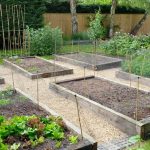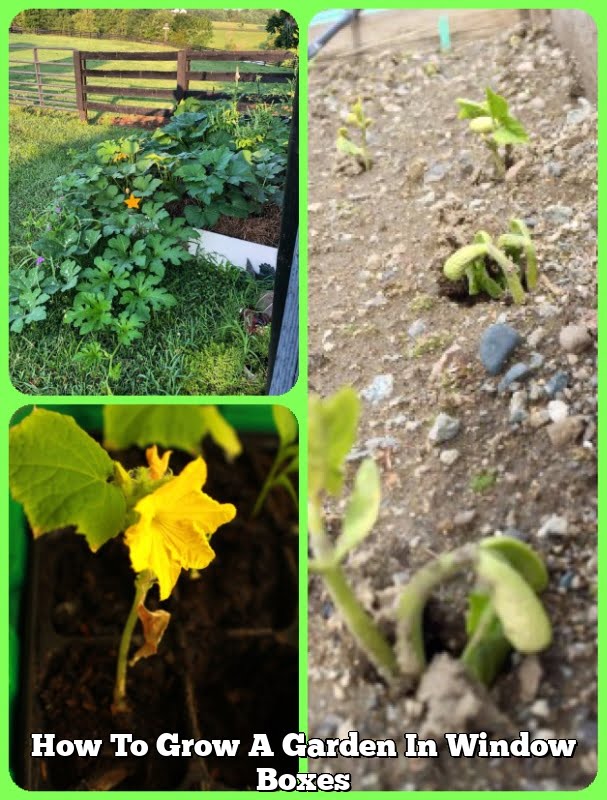Window box vegetable gardens offer a picturesque and practical way to grow fresh produce in limited spaces. These compact containers not only add charm to windowsills and balconies but also provide a convenient source of homegrown vegetables. In this article, we will explore the world of window box gardening, highlighting the benefits it brings and how you can create your own flourishing mini-garden.
By utilizing window boxes for vegetable gardening, individuals can optimize their space by taking advantage of vertical gardening techniques. The use of window boxes allows for the cultivation of an array of vegetables in a small area, making it ideal for urban dwellers or those with limited garden space. Additionally, having a window box vegetable garden provides easy access to fresh ingredients right outside your window, promoting a more sustainable lifestyle.
Whether you are a seasoned gardener or just starting out, window box vegetable gardens offer a low-maintenance option for growing your own food. With the right guidance on choosing the appropriate materials, selecting the best vegetables, planting and maintenance tips, and creative design ideas, anyone can successfully cultivate their own mini edible oasis.
Stay tuned as we delve into all aspects of creating and caring for a thriving window box vegetable garden while providing stunning images for inspiration along the way.
Choosing the Right Window Box
When it comes to setting up a window box vegetable garden, choosing the right window box is crucial for your plants’ success. There are various materials and sizes available for window boxes, each with its own advantages and considerations. Popular options include wood, plastic, metal, and fiberglass window boxes. Wood window boxes provide a classic look and are good at insulating roots from extreme temperatures.
Plastic window boxes are lightweight, affordable, and come in various colors and designs. Metal window boxes offer a modern touch and are durable but may heat up quickly in the sun. Fiberglass window boxes are lightweight yet sturdy, resistant to rotting or fading.
In selecting the best window box for your space, consider factors such as the amount of sunlight your windows receive, the size of the box needed for optimal plant growth, and your aesthetic preferences. A sunny spot may require a deeper box to accommodate larger root systems of vegetables like tomatoes or peppers that thrive in direct sunlight.
For windows with limited sunlight exposure, shallower boxes with smaller openings might be more suitable for herbs or leafy greens that do not require as much sun.
Additionally, take into account the weight capacity of your chosen window box to ensure it can support the soil and plants when fully planted. Make sure to secure the window box properly to prevent accidents or damage caused by strong winds or sudden movements. By carefully considering these factors before purchasing a window box for your vegetable garden, you can create a thriving and visually appealing display that enhances both your space and gardening experience.
Selecting the Right Vegetables
When it comes to creating a window box vegetable garden, one of the most important aspects to consider is selecting the right vegetables that will thrive in this unique setting. Whether you have limited space or are simply looking to add some greenery to your windowsill, choosing the right plants can make all the difference.
Here is a list of vegetables that are well-suited for window box gardens, taking into account factors such as sunlight requirements and space limitations:
- Cherry tomatoes: Perfect for adding a pop of color and flavor to your window box, cherry tomatoes are compact plants that do well in containers with ample sunlight.
- Herbs like basil, parsley, and chives: Not only do these herbs add freshness and fragrance to your kitchen, but they also require minimal space and can be easily maintained in a window box.
- Peppers: Both sweet and hot peppers can thrive in a window box, as long as they receive adequate sunlight and regular watering.
Additionally, leafy greens such as lettuce, spinach, and kale are excellent choices for window boxes due to their small footprint and quick growth cycle. These vegetables can be harvested multiple times throughout the growing season, providing you with a continuous supply of fresh produce right at your fingertips. By carefully selecting vegetables that are well-suited for window boxes based on their light requirements and space constraints, you can create a bountiful garden even in the smallest of spaces.
- Radishes: With their fast-growing nature and shallow root system, radishes are ideal for planting in a window box where space may be limited.
- Green onions: Also known as scallions or spring onions, these versatile vegetables can be grown in compact containers like window boxes and offer a distinctive onion flavor without requiring much room.
- Baby carrots: Varieties specifically bred for small spaces like Paris Market or Thumbelina carrots are perfect for window box gardens due to their petite size and suitability for container growing.
Remember to consider the amount of sunlight your windowsill receives when choosing vegetables for your window box garden. Vegetables that require full sun should be placed in south-facing windows where they can soak up adequate sunlight throughout the day.
On the other hand, leafy greens and herbs that prefer partial shade may do better in an east or west-facing window where they can receive softer morning or afternoon light. By carefully planning out your selection of vegetables based on these factors, you can ensure a successful harvest from your window box garden.
Planting and Maintenance Tips
Planting and maintaining a window box vegetable garden can be a rewarding experience for both novice and experienced gardeners. This section will provide you with the essential steps to successfully plant vegetables in a window box and maintain them for a bountiful harvest.
Step 1: Choosing the Right Soil
The first step in planting your window box vegetable garden is selecting the right soil mix. Opt for a lightweight potting mix that is rich in organic matter and drains well to ensure proper root development. Avoid using regular garden soil, as it may become compacted in a confined space like a window box.
Step 2: Planting Your Vegetables
When planting your vegetables, consider the spacing requirements of each plant to ensure they have enough room to grow. Place taller plants towards the back of the window box and trailing or shorter plants towards the front. Be sure to follow the planting depth recommendations for each vegetable variety.
Step 3: Watering and Maintenance
Proper watering is essential for the health of your window box vegetable garden. Check the moisture levels regularly by sticking your finger into the soil – if it feels dry, water your plants thoroughly. Fertilize your vegetables every few weeks with a balanced fertilizer to provide them with essential nutrients for growth.
By following these planting and maintenance tips, you will be on your way to enjoying a thriving window box vegetable garden filled with an abundance of fresh produce all season long. Remember, consistent care and attention are key to ensuring a successful harvest from your compact yet productive container garden. So get growing and watch your window box come alive with delicious and nutritious veggies.
Creative Design Ideas
Window box vegetable gardens offer a fantastic opportunity to showcase creativity while also providing fresh produce right at your fingertips. When it comes to designing your window box garden, the possibilities are endless. One innovative and visually appealing way to arrange vegetables and herbs in a window box is by incorporating a mix of colors, textures, and heights. This not only adds visual interest but also maximizes space utilization.
Consider combining taller plants like tomatoes or peppers at the back of the window box to create a natural backdrop. In front of them, plant medium-sized herbs such as basil or parsley for a lush and aromatic display. Finally, fill any gaps with trailing plants like strawberries or thyme to add a cascading effect. This layered approach not only looks beautiful but also ensures that each plant receives adequate sunlight for optimal growth.
Another creative design idea for a window box vegetable garden is to focus on themes or color schemes. For instance, you could plant an Italian-themed window box with tomatoes, basil, oregano, and garlic chives for a cohesive look and easy access to fresh ingredients for pasta sauces and pizzas.
Alternatively, create a rainbow-inspired window box by planting vegetables in different hues like red tomatoes, orange carrots, yellow bell peppers, green cucumbers, and purple eggplants. This colorful arrangement not only delights the eyes but also makes harvesting an exciting experience.
| Benefits of Creative Design Ideas | Key Features |
|---|---|
| Enhances visual appeal of window box gardens | Layered approach for maximizing space |
| Promotes theme-based gardening | Colorful arrangements for aesthetic appeal |
| Provides easy access to fresh produce | Creates excitement during harvesting |
Seasonal Planting Guide
Spring
During the spring season, window box vegetable gardens can come alive with a variety of fresh and vibrant produce. Consider planting vegetables such as lettuce, spinach, radishes, and peas in your window boxes. These cool-season vegetables thrive in the moderate temperatures of spring and can be harvested for delicious salads or snacks. Make sure to provide adequate sunlight and water for optimal growth during this time of the year.
Summer
As the temperatures rise in the summer months, it’s essential to choose heat-tolerant vegetables for your window box garden. Tomatoes, peppers, cucumbers, and herbs like basil and parsley are excellent choices for summer planting. These plants not only thrive in warm weather but also add color and flavor to your dishes. Be mindful of watering regularly during hot days and consider adding a layer of mulch to retain moisture in the soil.
Fall
Transitioning into fall, you can continue to enjoy fresh vegetables from your window box garden by planting crops that thrive in cooler temperatures. Vegetables like kale, Swiss chard, carrots, and beets are great options for fall planting. These hearty crops can withstand the chilly weather and provide nutritious additions to your meals. Ensure adequate drainage in your window boxes to prevent waterlogging during the rainy autumn season.
By following this seasonal planting guide for your window box vegetable garden, you can maximize growth and yield throughout the year. Experiment with different combinations of vegetables to keep your garden exciting and bountiful each season. Remember to monitor the progress of your plants regularly and make adjustments as needed to ensure a successful harvest.
Troubleshooting Common Issues
Pests, diseases, and poor growth can be common challenges faced by window box vegetable gardeners. However, being equipped with the right knowledge and techniques can help overcome these issues and ensure a successful harvest. Here are some common problems you may encounter and practical solutions to address them:
- Pests: Common pests that may affect your window box vegetable garden include aphids, caterpillars, and snails. To combat these intruders, you can introduce natural predators like ladybugs or use organic insecticidal soap. Regularly inspecting your plants for signs of pests and taking prompt action can help prevent infestations.
- Diseases: Plant diseases such as powdery mildew or fungal infections can impact the health of your vegetables. Proper spacing between plants to promote air circulation, watering at the base of plants to avoid wet leaves, and applying organic fungicides can help prevent diseases from spreading. Removing affected plant parts promptly can also stop the spread of infection.
- Poor Growth: Factors like inadequate sunlight, improper watering, or nutrient deficiencies can lead to poor growth in your window box vegetables. Ensure your plants receive sufficient sunlight for at least 6 hours a day, water consistently but avoid overwatering, and fertilize according to the specific needs of each vegetable variety. Regular monitoring of plant health and making adjustments as needed can help promote healthy growth.
By being proactive in identifying and addressing these common issues in your window box vegetable garden, you can create an environment where your crops thrive and flourish. Remember that prevention is key when it comes to pest control and disease management – regular maintenance and attentive care will go a long way in ensuring a bountiful harvest from your compact garden space.
Stunning Images for Inspiration
Window box vegetable gardens are not only a practical and sustainable way to grow your own produce but also a visually appealing addition to any space. The combination of fresh greenery, colorful vegetables, and aromatic herbs can create a charming display that enhances the aesthetics of your home or garden. For those seeking inspiration for their own window box projects, stunning images of creatively designed vegetable gardens can provide the motivation needed to get started.
When selecting images for window box vegetable gardens, it is important to look for examples that showcase a variety of planting styles, layouts, and color combinations. Whether you prefer a minimalist approach with uniform rows of herbs or a more eclectic mix of vegetables and flowers, there are endless possibilities to explore. Images that feature different seasons can also offer valuable insight into how to adapt your plantings throughout the year for optimal growth and harvest.
In addition to serving as a source of inspiration, these images can be used as visual references when designing your own window box garden. From selecting the right containers and plants to arranging them in an appealing manner, having a collection of images to refer to can help clarify your vision and guide you through the process.
By drawing ideas from these beautiful examples, you can create a window box vegetable garden that is not only productive but also a delightful sight to behold.
Frequently Asked Questions
What Plants Look Good in Window Boxes?
Window boxes are a great way to add color and life to your windows. Plants like geraniums, petunias, begonias, and marigolds are popular choices because of their vibrant colors and ability to thrive in a confined space.
How Do You Arrange Plants in a Window Box?
When arranging plants in a window box, it’s essential to consider the height, color, and growth habits of each plant. Start by placing taller plants in the center or back of the box, with shorter plants towards the front or edges. Mix different colors and textures for an appealing display.
Can You Grow Vegetables in a Window Box?
Yes, you can definitely grow vegetables in a window box! Vegetables like cherry tomatoes, lettuce, radishes, and herbs can thrive in a window box as long as they receive enough sunlight and water. Just make sure the box is deep enough for root development and drainage.

If you’re looking to get into vegetable gardening, or are just looking for some tips on how to make your current garden better, then you’ve come to the right place! My name is Ethel and I have been gardening for years. In this blog, I’m going to share with you some of my best tips on how to create a successful vegetable garden.





